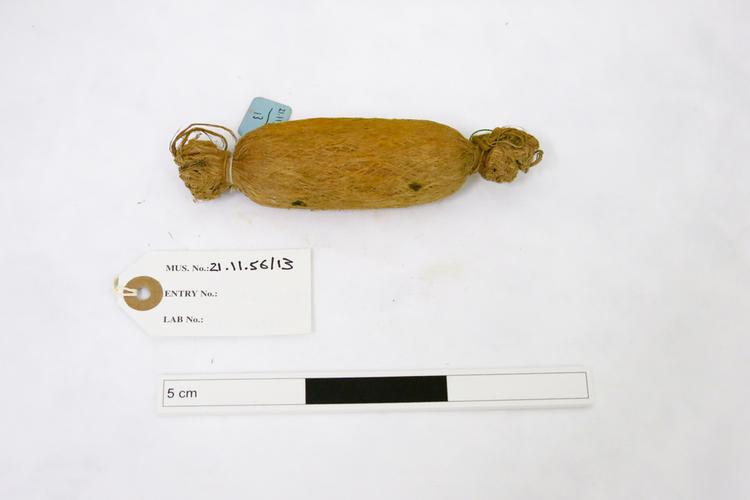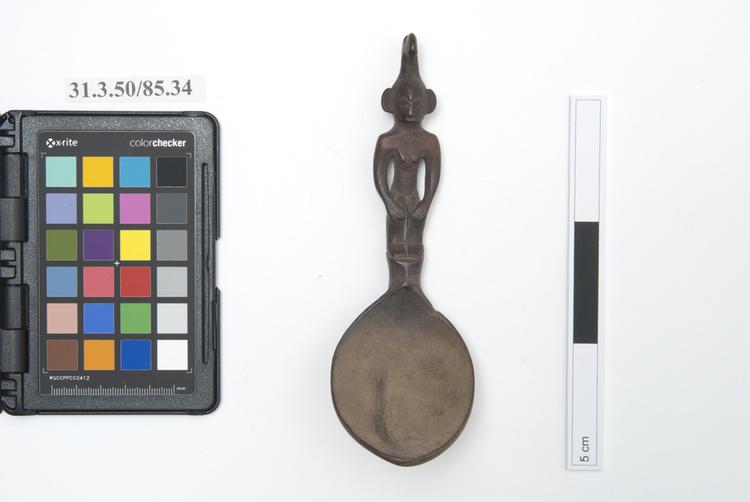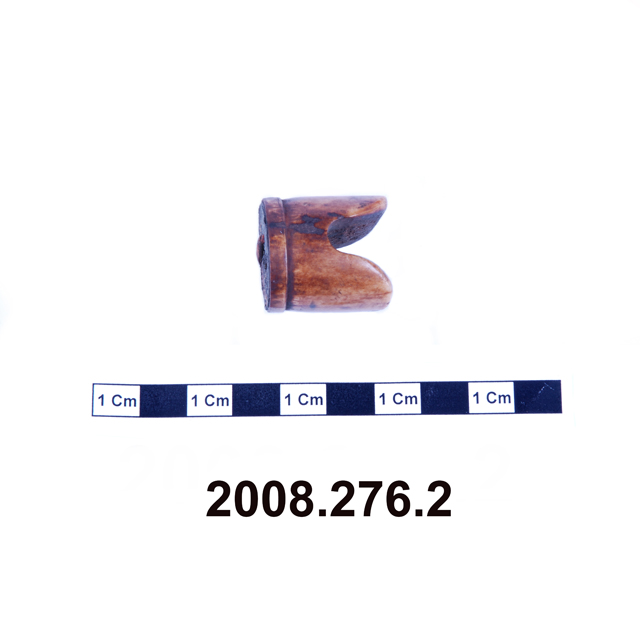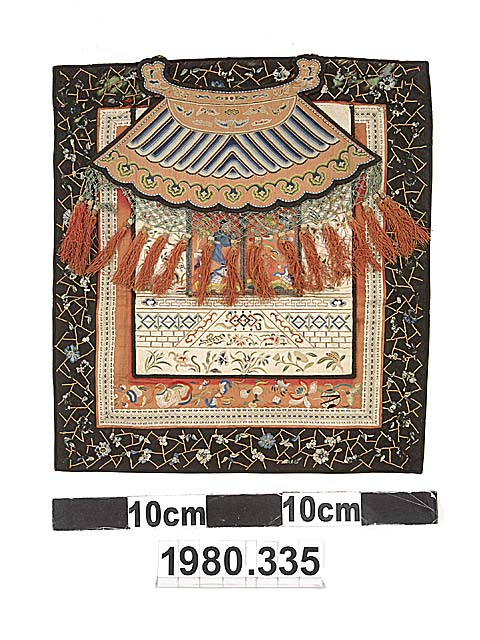
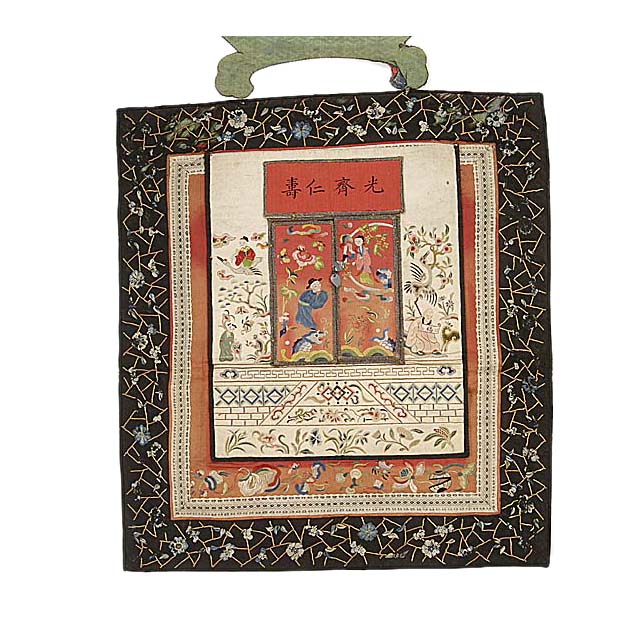
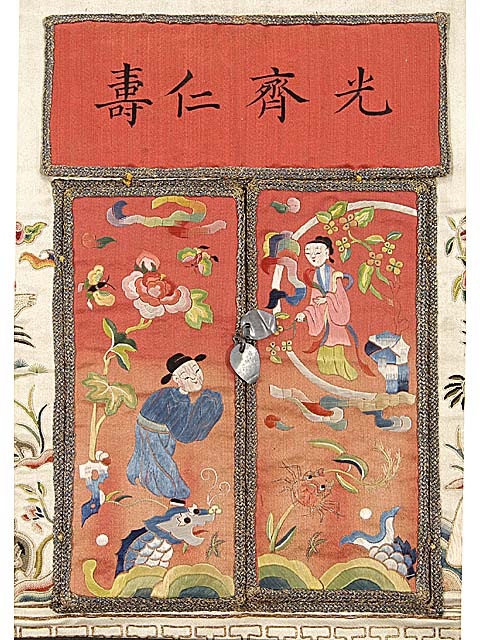
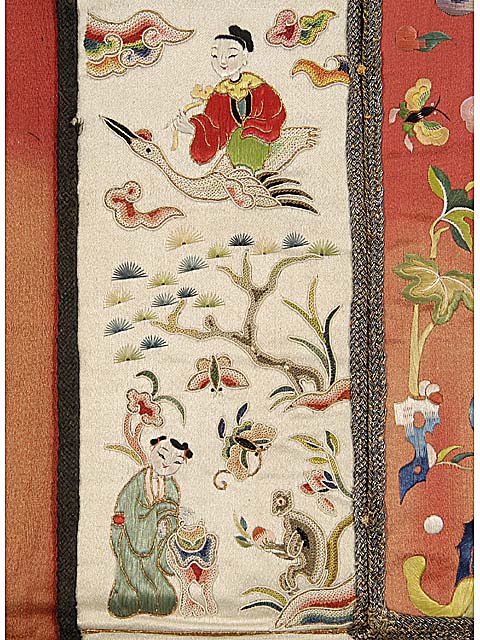
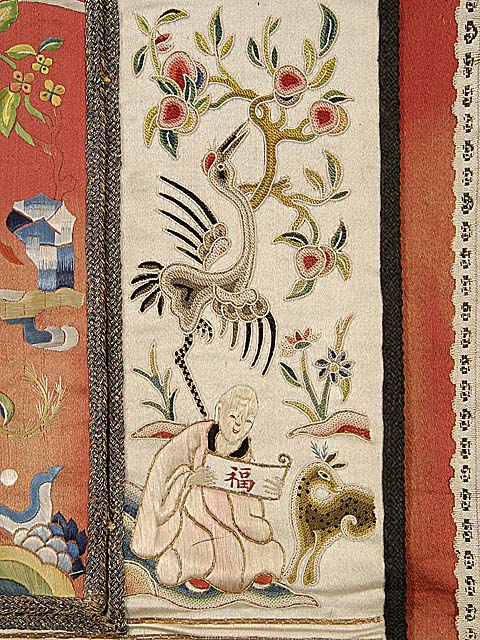
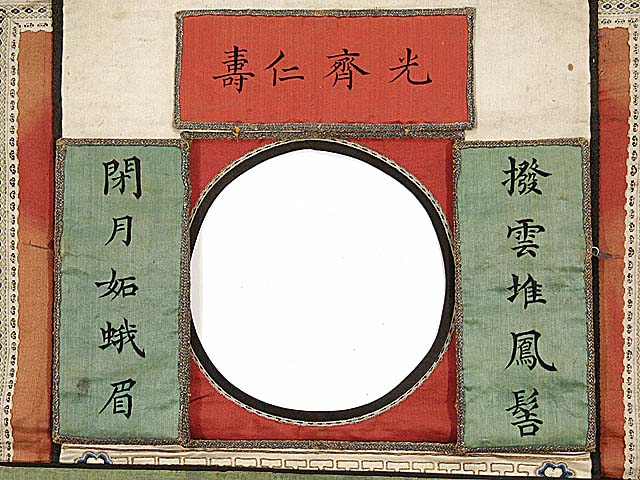
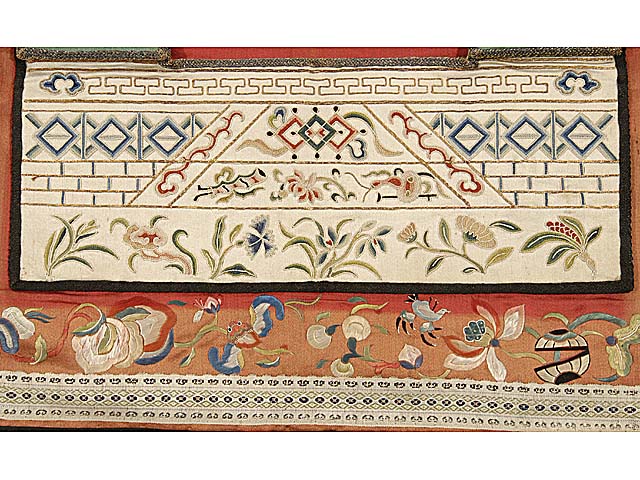
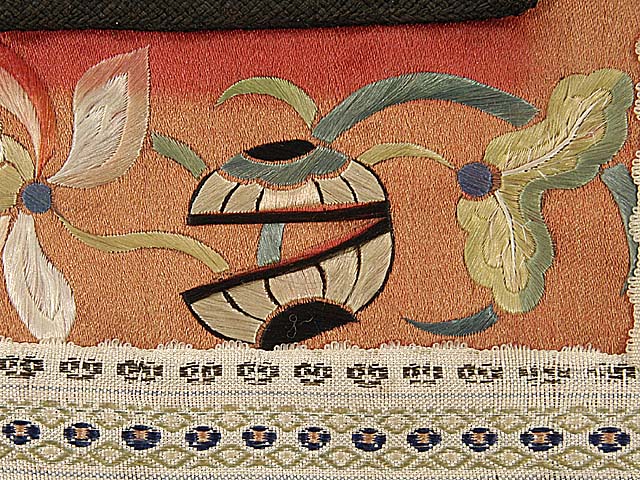
Embroidered silk hanging with a red centre panel with a circular aperture and black border. Symbols including bats and flowers are embroidered along the bottom. Over the top is another panel with two hinged doors, both of which have lines of Chinese poetry. On the outer part of the red silk flap above the doorway is written a proverb. The top right has a figure who possibly may be the moon goddess, and below her a crab, which is unfinished. On the left door panel is a male figure in a long blue robe and black hat surrounded by a peony, butterflies, and the head of a dragon-shrimp, lung hsia. Its tail appears in the right door panel. The panel next to the left door has many motifs, including a young woman riding on a crane, holding a lotus, whilst below her is a pine tree, another woman, and a monkey holding a peach. The panel outside the right door has Shou Hsing, the god of longevity, reading a scroll. Nearby are a deer and a crane, reaching up to a peach tree. A panel with a blue macramé fringe and red tassels hangs over the top of the doors. The piece is lined with green silk damask.
The piece is rich in symbolism. A monkey holding a peach is a symbol of longevity. One of the 12 Chinese zodiac animals, it is believed to have magical powers and can control demons which harm humans. The pine tree is a symbol of longevity, and also of friendship and constancy, especially in times of adversity. Two butterflies signify joy, summer and conjugal bliss. The peony is a 'yang' flower signifying masculinity, wealth and reputation. It also symbolises love, a beloved woman, spring and high spirits. The head of a lobster or crayfish, known as the dragon-shrimp, lung hsia, symbolises riches, married bliss and harmony. There are also three Daoist emblems in the textile: a bamboo tube and rods, symbolic of Zhang Guo lao, patron saint of artists and calligraphers, a lotus, symbol of He Xiang u, patron saint of housewives and a gourd with a crutch, the symbol of Li Tiegli, the patron saint of the sick. See Garrett, Valery M (1997), A collector's guide to Chinese dress accessories, Singapore, Times Editions and Hall, James (1994), Illustrated dictionary of symbols in eastern and western art, London, John Murray. Also Chung, Young Yang (1979), The art of oriental embroidery: history, aesthetics, and techniques, New York, Charles Scribner's Sons: Fig. 2 - 17, p. 36 - photograph of a mirror cover, Qing dynasty, 19th century.




